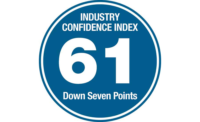Industry's Lack of Diversity is at the Tipping Point
With the turnaround in the economy and a workforce development crisis on every level, an old issue has reached a tipping point. I’m talking about the lack of diversity in the construction industry.
 |
| Darnell |
It is time that we meet in the middle and figure out how to use a more diverse workforce to create better projects and better business results.
I have attended many great industry events lately, but the demographics are a little frightening, with lecture halls and reception rooms filled with mostly middle-aged, white men.
If I were a woman or a minority—or even a young person—I would take one look at the demographic and run away like my hair was on fire.
We all know that women and minority participation is quite low, and the effort to be more inclusive is limited at best. There are several reasons for this: a lack of role models for women and minorities, wage disparity, the current culture of the industry, and lack of understanding and connection among all of these groups.
There is some good news. Several companies and industry organizations are reaching out to young people, especially women and minorities, through a variety of workforce development initiatives.
The ACE Mentoring Program is one, and it has been very successful in promoting the construction industry as a viable career. But since this is a more long-term solution, we must be more aggressive in our approach to realize some much-needed short-term results.
If all industry organizations and companies would commit to some very simple initiatives, we could improve diversity dramatically in a relatively short period of time:
Provide education and information. Reach out to the many women and minority organizations throughout the construction industry and court them, let them know that they are welcome. Invite their members to the currently white, male dominated events and give them the spotlight. Create an open dialogue. We need to learn more about each other, and the best way to do that is to get everyone in the same room. This will help to shift the industry image from one of exclusion to one of inclusion.
Provide meaningful training for all the white guys. I don’t mean “diversity” training or “sensitivity” training. These tend to only provide the legal requirements to keep from being sued. I’m talking about training that creates true understanding and trust. We need to explode stereotypes and preconceptions from all sides of this equation and create an atmosphere of cooperation, trust, and comfort.
Provide meaningful training for all of the women and minorities. Give them the tools they need to navigate this maze of white males. Successful women and minorities in the industry know this navigation, and these skills are teachable and learnable. We must use this knowledge to create programs that teach these skills to maximize the success of women and minorities.
There is a very real business case for these inclusion initiatives.
1. Diverse people with diverse thinking leads to better ideas and better solutions to industry problems. We need the perspective of minorities and women to move forward.
2. If you look at sheer numbers, when more women and minorities enter the industry, it will greatly help our current workforce development crisis.
3. The industry is gravitating toward more collaborative ways of project delivery such as IPD and Lean, and women are simply better at collaboration than men. This is based on my research on the typical emotional profiles for men and women in the industry. Most women score relatively high in social responsibility (the ability to work in teams), empathy, and interpersonal relationships. Most men score relatively high in self-regard, independence, and assertiveness.
4. ENR reported research in a 2010 article that “companies with more women board members significantly outperformed those with fewer female directors in return on equity, return on sales, and return on invested capital.” This article was written five years ago, and it seems we have made little progress with regard to promoting more women leaders.
Many construction guys have the attitude that they “don’t mind” women and minorities in construction. This attitude must change. We must take proactive steps, start this dialogue, and actively pursue women and minorities. We need them to move the industry forward and create a whole new industry that is inclusive, diverse and sustainable. We need them to create more successful projects and better profitability.
If we don’t make this effort and women and minorities continue to stay away from construction, we will be in big trouble.
Brent Darnell, a mechanical engineer and a graduate of Georgia Tech, is a leading authority on emotional intelligence and a pioneer in its use in the construction industry to improve social competence and leadership skill among managers and executives. He is an adjunct professor at Auburn and Penn State universities and author of The People-Profit Connection and the Tough Guy series. Darnell, president of Atlanta-based Brent Darnell International, will share his views on successful women mentors in New York City on May 6 at ENR’s Groundbreaking Women in Construction conference.




